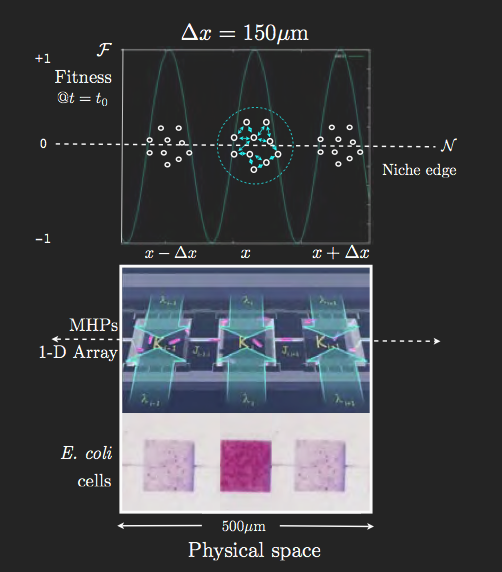We study the relationship between environment and cell determination in synthetic ecosystems made up of cell populations/communities inhabiting spatial niches built with all kind of materials and fabrication techniques. We are expanding from our previous work on bacterial cells inhabiting nano-fabricated fluidic landscapes into other cell types (operating closer to the multicellular end of the integration/differentiation continuum) and other fabrication techniques and materials.
Arrays of Micro Fabricated Habitat Patches
At the core of these technologies is the capacity of the habitat landscape (spatial and temporal distributions of growth media) available to cells to be able to support the formation and development of local cell populations. When fitness is larger than a critical niche edge [latex color=”ffffff” background=”000000″] N [/latex], local (a a given spatial scale) population are possible. By fabricating microfluidic environments we can built lattices where to study cell communities in the content of controlled ecosystem configurations. On the right we see how, a one dimensional landscape of Micro Habitat Patches (MHP arrays) can be constructed. An ecosystem service of habitat renewal can be implemented by means of nano slits supplying MHPs with fresh growing media. Diverse aspects of the spatial biology of cellular assemblages can be assessed on these synthetic ecosystems. In particular we are interesting on using this and related methods to understand the spectrum which spans from loose populations and communities of cells at one end, to structured tissues and organs on the other end. We aim to expand our platform from synthetic ecosystems to lattice organs where the spatial phenotypes of diverse cell types can be studied.
